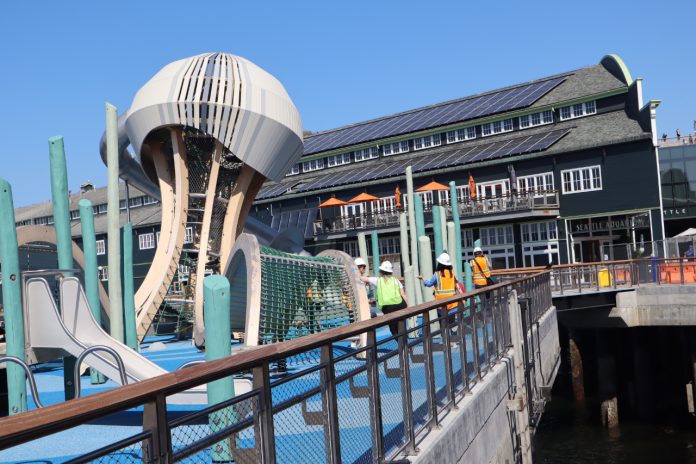
Today, the City of Seattle will reopen a newly rebuilt park at Pier 58, a final piece of the $806 million revamp of the central waterfront to fall into place. The Westlake Park-sized pier, which replaces the old 1970s-era Waterfront Park, features an astroturf lawn and tree grove, a restored fountain, and a wide expanse with different types of seating. But the true star of the show is the new playground space, which will become the largest playground for kids in central downtown.
Situated directly between the Great Wheel and the Seattle Aquarium, the new pier extends the city’s front porch out into Elliott Bay and enhances a natural gathering space close to some of the city’s most popular amenities and well-used pedestrian corridors.
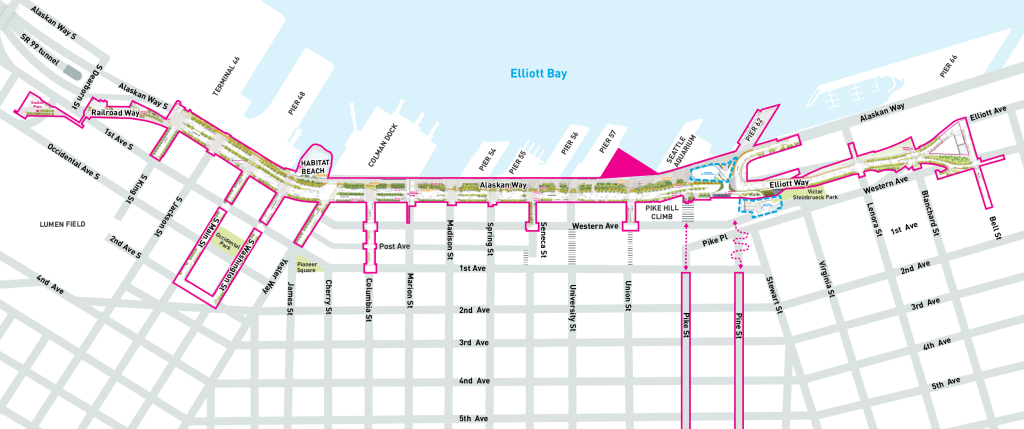
Seattle will celebrate the pier’s grand opening on Friday afternoon, with a community event from 4 to 8pm following a 3pm ribbon cutting. It’s a big milestone when it comes to construction along the waterfront, which began when the City started replacing the Alaskan Way seawall in 2013.
A complement to popular Pier 62, which has been utilized this summer as a concert venue, Pier 58 will add another flexible space for waterfront visitors to hang out, with Friends of Waterfront Seattle set to provide programming. The turf lawn is likely to prove a draw for pick up soccer games along with more structured, scheduled events. Close by is the staffed restroom, which has been seeing high usage after it opened this spring.
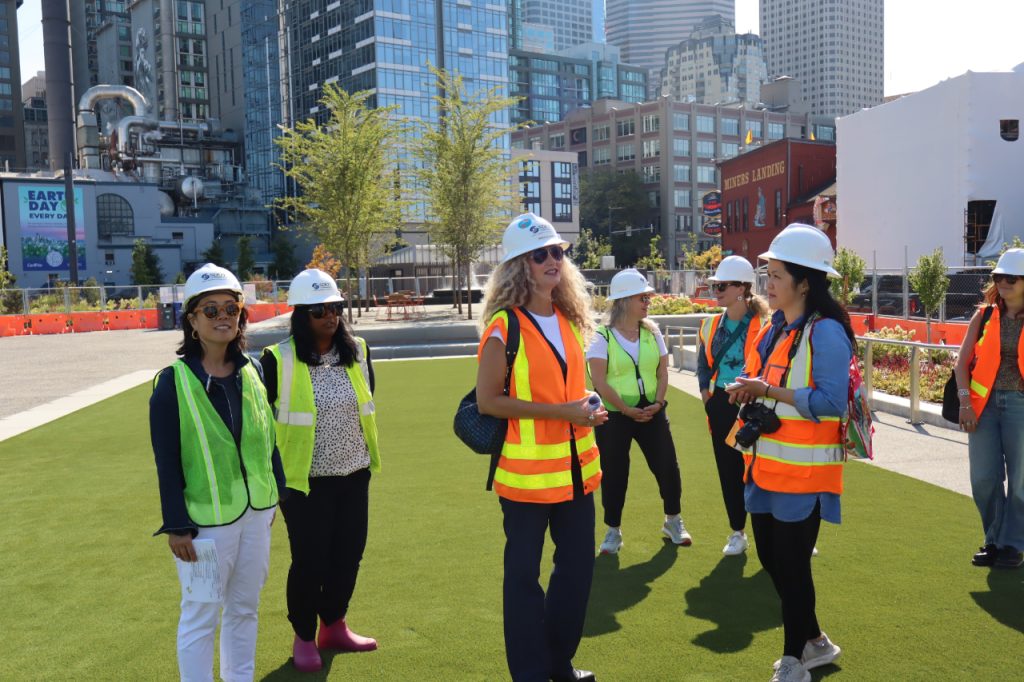
“When we were envisioning the design for this space, it’s really the heart of the waterfront,” Angela Brady, the Director of the Seattle Office of the Waterfront, Civic Projects, and Sound Transit said this week at a press preview of the new park space. “This is kind of as central as you can get. And because we wanted to make sure the proximity of the public restroom was close enough to the playground area and really the heart and center of the waterfront.”
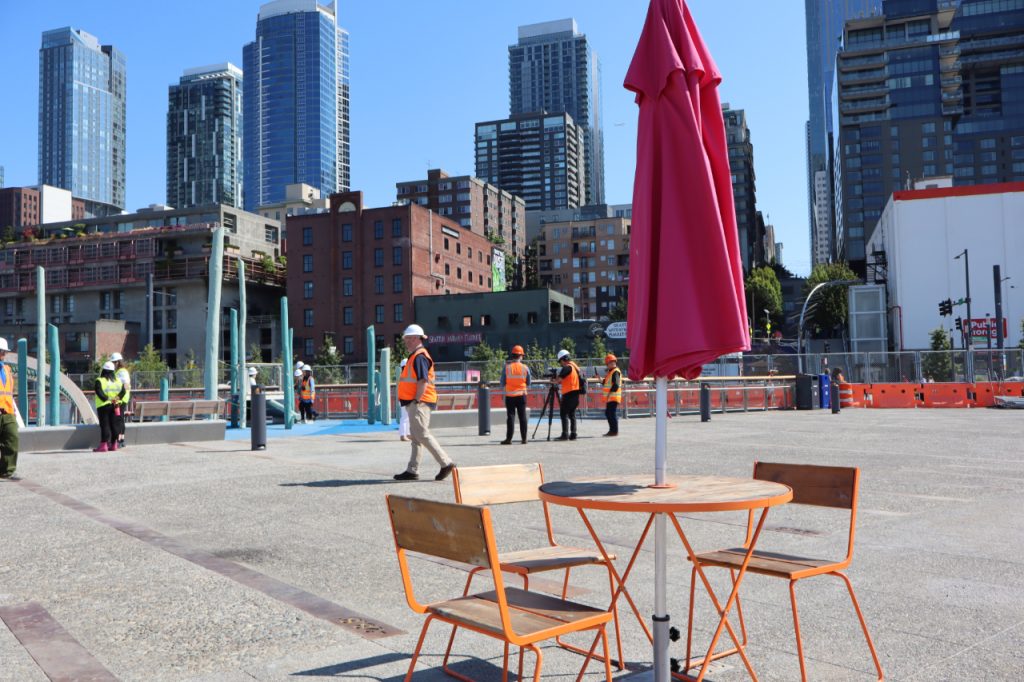
The new park space features a direct nod to the 1974 Waterfront Park, in the form of Waterfront Fountain, a sculpture created by James FitzGerald and Margaret Tomkins. Housed in a brand new water feature, the fountain was restored after falling into Elliott Bay when the former Pier 58 collapsed in 2020 as it was in the process of being demolished. The fountain joins additional water features along the waterfront including George Tsutakawa’s Joshua Green Fountain further south at Colman Dock.
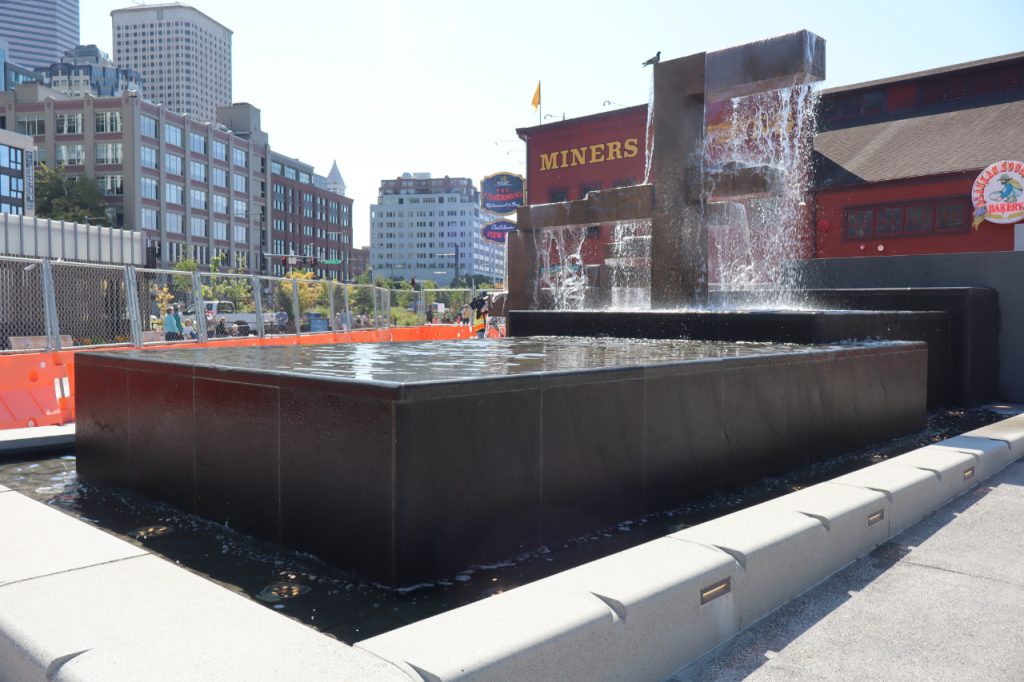
With the completion of Pier 58, construction on the entire waterfront overhaul is tantalizingly close to completion.
At the north end of the corridor, work improving east-west connections at Bell Street is nearly complete, and this week the Seattle Department of Transportation (SDOT) completed work on the final bike connection along Alaskan Way that will connect to the Elliott Bay Trail in Myrtle Edwards Park. Meanwhile, the Elliott Bay Connections project, funded by Melinda French Gates, Mackenzie Scott, the Diller-Von Furstenberg Family Foundation, and the Expedia Group, is in full construction with the aim of completing before the 2026 FIFA World Cup. Currently, that project is causing headaches by closing the Thomas Street pedestrian and bike bridge between Uptown and the North Downtown waterfront.
Seattle’s most hotly anticipated playground
Kids from around the Seattle region have been watching the new playground take shape at Pier 58 from behind the construction fences for months, stoking anticipation for the grand opening this week. The centerpiece of the playground is a 25-foot-tall climbing structure intended to mimic a jellyfish, which kids can climb up into, with an attached metal slide.
Surrounding play equipment, including a smaller slide for younger kids and other climbing structures, make the new playground the largest play area in downtown, much larger than the play areas at Westlake and Occidental Park. It’s also grander than the small play structure along the Overlook Walk pathway up to Pike Place Market, also built as part of the waterfront project.
A third waterfront park play area was initially envisioned on an SDOT right-of-way in Belltown, but that project ended up cut from the scope of the final corridor overhaul. It’s still unclear what that spot of empty land will become, after Seattle City Light abandoned plans for an electric vehicle charging facility.
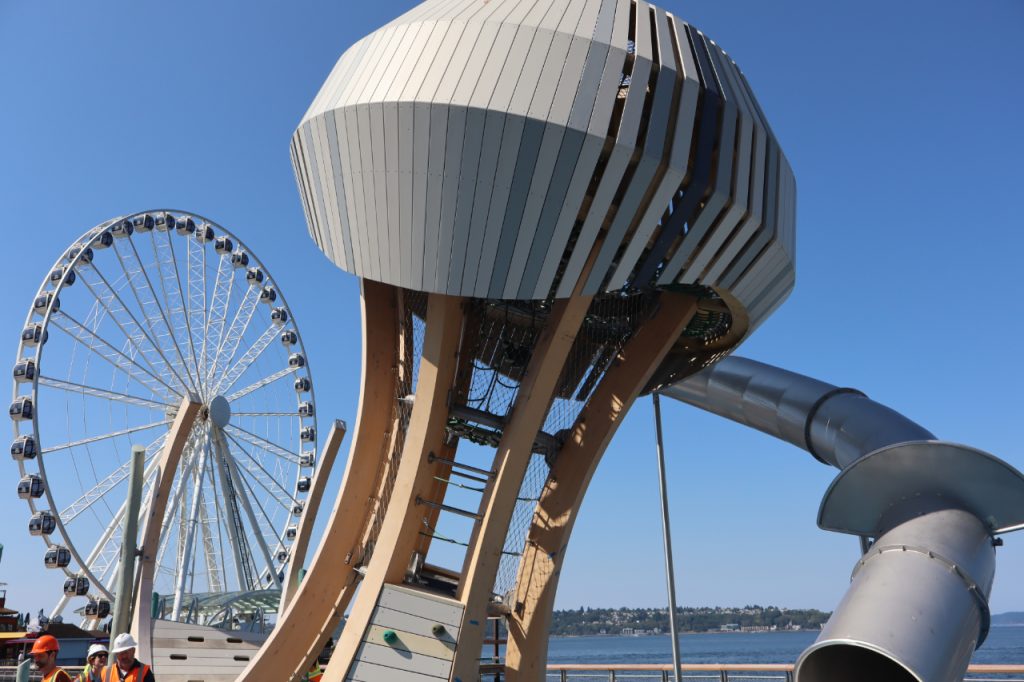
“The jellyfish concept is really a blend of art, and architecture, and play, but what always stands out to me as a person who spends a lot of time on playgrounds, it’s also how much visibility there is in and around structure. It’s really important for parents, especially in a busy waterfront site. So really keeping things really light and airy,” said Melissa Quinn of Earthscape, the Canadian firm that designed the play structures.
In a city that’s often hostile to the needs of kids, the new playground offers a major amenity that’s designed to keep kids wanting to return.
“It’s about a level of open-ended play,” Quinn continued. “There’s not just one correct way to do it. There’s lots of different opportunities, at different levels, a graduated challenge. Some kids are maybe going to engage with it very differently than other siblings. But the goal here is that it gives kids a reason to come, not just once, but over and over again.”
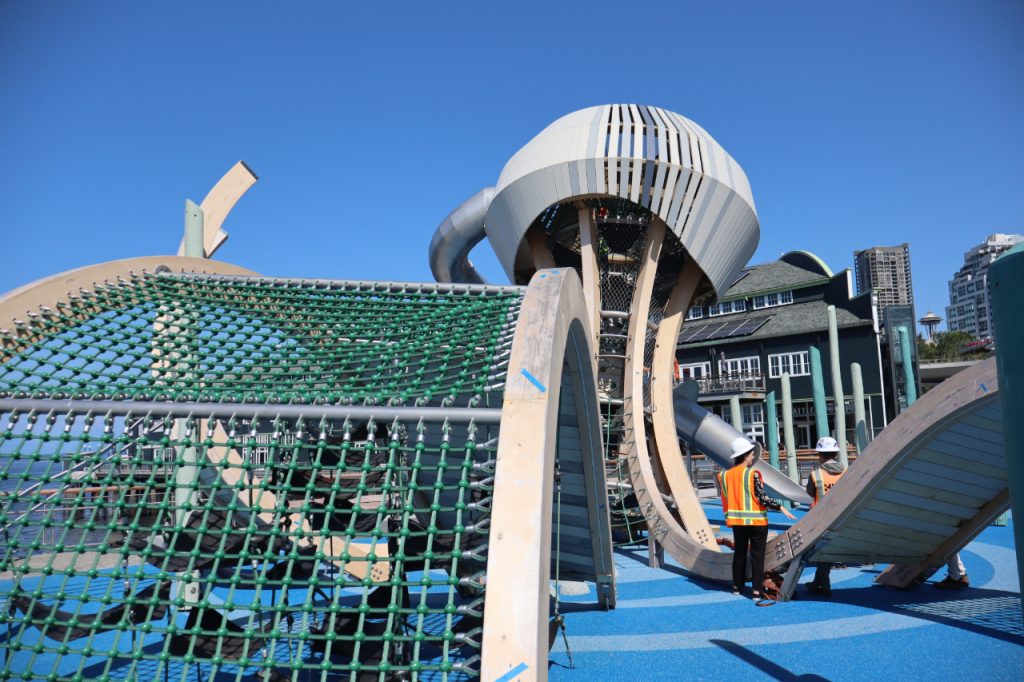
While not as directly as the new Pioneer Square habitat beach, Pier 58 also includes elements intended to enhance the existing Elliott Bay marine ecosystem. The gap between the pier and the rest of the pedestrian promenade at the playground is intended to let natural light filter down into Elliott Bay, a move that serves a significant purpose.
“The core values of the work that we’ve done on the design for the overall waterfront is we wanted to put back something better than what was here before in terms of marine habitat and improvements for marine life,” Brady said. “One of the ways we can do that is by providing areas of plenty of light, natural light, which helps the algae grow and helps create some food sources for the juvenile salmon that make their run every year.”
A novelty today, the new Pier 58 is almost sure to grow into a beloved fixture as Seattle residents and visitors alike get used to the city’s new waterfront park.
Ryan Packer has been writing for The Urbanist since 2015, and currently reports full-time as Contributing Editor. Their beats are transportation, land use, public space, traffic safety, and obscure community meetings. Packer has also reported for other regional outlets including BikePortland, Seattle Met, and PubliCola. They live in the Capitol Hill neighborhood of Seattle.

